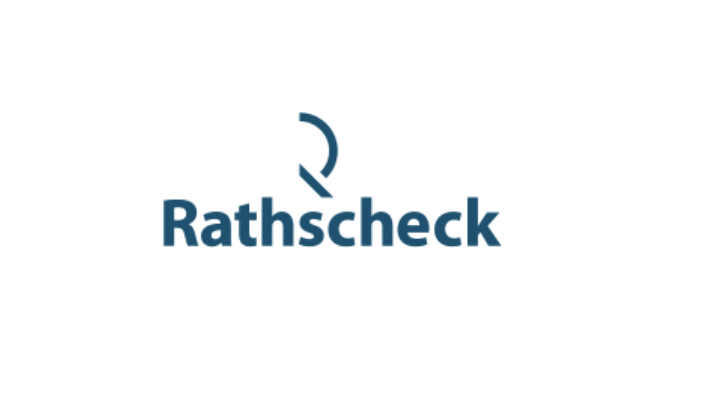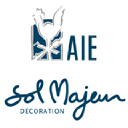Synthèse
Since 2020, France remains the world's largest consumer of slate despite a structural decline in the domestic market which has seen consumption decrease. Nearly all slate consumed in France is imported, largely from Spain, which virtually monopolizes world production, providing approximately 90% of global supply. Spanish producer Cupa Pizarras is a market leader with a reported turnover of 430 million euros. In the French slate market, small businesses, particularly in ornamental stone trade, are prevalent, though overall employment in this segment has decreased. Much of the demand for slate is linked to the construction sector, especially housing construction and renovation, with a significant portion of work carried out to improve homes.
Despite technological innovations in the sector and the material's renowned durability, the slate market faces challenges related to high costs, the requirement for solid roofing infrastructure, and a minimum roof pitch for installation. The market is largely segmented between global leaders and French distributors, with strict European standards regulating the quality of slate based on water absorption, thermal shock resistance, and sulfur dioxide exposure.
Fluctuating dynamics of the French Slate Market
In analyzing the French slate market, one must consider the multifaceted nature of the demand, the predominance of imports, and the technological innovations reshaping the industry. France stands as a global leader in slate consumption, heavily relying on imports to meet its substantial demand for the material, primarily due to an almost complete exhaustion of domestic slate deposits. As of the time of our cutoff, it is estimated that France annually consumes between 190,000 and 210,000 tons of slate, a significant decrease from the peak consumption of between 280,000 and 320,000 tons in earlier years.
The demand is closely tied to the construction industry, particularly the housing construction sector, with residential housing construction being a critical determinant for slate demand. Given that housing (both individual and collective) represents the majority of constructions by square meters, the market for slate remains predominantly driven by new housing projects. This includes a focus on roofing works, though it's important to note that these projects are not the most common type of work undertaken by French homeowners. Slate's durability, with lifespans of up to 100 years, and its innate waterproofing, insulation, and fire-resistant properties bolster its market position. Yet, the high initial cost and the need for a robust structural foundation due to slate's weight are considerable drawbacks. Moreover, the roof pitch required for installation limits its applicability.
From the perspective of market structure, there's a noticeable predominance of small businesses in the stone trades sector, with companies engaged in ornamental stone extraction, including slate, representing only between 6 and 8 percent of the market. The dwindling slate production has been evidenced by a decline in employees within the ornamental and building stone quarrying sector, reducing from around 1,550 to 1,400. This decline in production stands in contrast to Spain's dominion over production, with the country claiming nearly 90% of the world's slate output and an average slate worker producing between 1.9 and 2.5 million pieces annually. The presence of global industry leaders like Cupa Pizarras exemplifies the monopoly that Spanish companies hold on the market.
Regulations play an instrumental role in the slate industry, setting standards for the quality of slate sold in Europe. Quality criteria based on water absorption rates, resistance to thermal shock, oxidation, and exposure to acid rain ensure the durability and robustness of the slate used in construction projects.
Key Players Dominating the Slate Market Landscape
The slate market is characterized by a tight knit of influential players who have established themselves as dominant forces in the global sphere of slate production and distribution. Among these, certain companies stand out due to their expansive operations, historical presence, and market influence.
- Cupa Pizarras: As the pinnacle of natural slate production, Cupa Pizarras not only leads but arguably defines the industry standards. Based in Spain, which wields a virtual monopoly over the world's slate supply, Cupa Pizarras is renowned for offering slate of exceptional quality, contributing to Spain's status as a global powerhouse in the sector. Their extensive product range and advanced quarrying techniques enable them to sustain a top position in the market, fulfilling a substantial part of the international demand for natural slate.
- Pizarras y Derivados: Also hailing from Spain, Pizarras y Derivados maintains a significant role in the slate industry. Though their financial figures are not publicly disclosed, they are noted for their contributions to the robust Spanish slate export market, providing a variety of slate products for both domestic use and international clientele.
- Rathscheck: Rathscheck represents another prominent figure in the slate industry, supplying a wide array of slate products for various applications. Their expertise and longstanding market presence contribute to the overall competitiveness and diversification of the international slate market.
- On the distribution front, companies like Saint Gobain and La-rivière play pivotal roles within the French market, where slate consumption is notably high. Saint Gobain's presence extends beyond French borders, with a diverse range of building materials including slate, cementing its position as a key distributor in the slate sector. La-rivière, although more focused on the French market, still contributes substantially to the availability and distribution of slate products within the country.
Together, these companies create a market structure where leadership is based on production capabilities, distribution networks, and the ability to cater to an ever-demanding and discerning global customer base. Each company's history, specialization, and strategic positioning ensure that the slate market remains dynamic and that the traditional appeal of slate as a building material is preserved and propagated.
à la compréhension de ce marché
Détail du contenu
 Informations
Informations
- Nombre de pages : 30 pages
- Format : Version digitale et PDF
- Dernière mise à jour : 05/09/2021
 Sommaire et extraits
Sommaire et extraits
1 Market overview
1.1 Definition and scope of the study
Slate is a rock derived from a clay that belongs to the schist family. It has properties that allow it to split due to its cleavage in the direction of sedimentation. Traditionally used as a roofing material for exterior buildings (roofing and tiles in particular), slate can also be used indoors, in bathrooms and kitchens (worktops). As a result, slate building solutions are considered highly durable and are widely used around the world as a construction material, both inside and outside the building.
The world's leading market for slate, France imports over 95% of its needs from Spain, with a few exceptions, as all of its deposits are almost exhausted (the last major slate operation in France closed in March 2014). According to Les Echos, France alone consumes almost half the tons of slate produced worldwide, and the particular natural slate segment (representing the bulk of the market) in France is growing, despite a decline in the overall slate market in France.
The slate market is dominated by a number of major players, such as the Cupa group, leaving little room for new entrants. To survive in an unfavorable economic climate, players in the slate market are seeking to reach specifiers (architects and the general public), and not just roofers. After France, the biggest consumers of slate are Australia, the Netherlands, Ireland and Poland. New markets are emerging in Finland, Kosovo, Japan, Kuwait and Qatar.
The slate sector is gradually overcoming technological challenges to offer ever more innovative systems: from pre-assembled facade cladding panels for contemporary architecture to invisible solar thermal panel systems made of 100% slate, which use its ability to heat easily with solar radiation, even in the absence of sunlight. Slate is a product with unrivalled technical properties that can be adapted to any project, adding considerable value. Natural slate gives any roof or facade an inimitable, timeless appearance that will remain unaltered over time.
1.2 Spain's virtual monopoly on global production
Spain is the world's largest producer of natural slate. In fact, the country has some of the largest and best reserves of tectonic slate in the world, particularly in the north of the country, in Galicia and Castilla de León. Spanish slate is also known for its excellent quality, and ...
1.3 French market in decline
The French slate market is rather unusual in that almost all slate is imported, due to a lack of domestic slate deposits. France is the world's leading consumer of this material, with around ***,*** tonnes of slate installed annually, mainly due to the use of slate in the renovation of numerous major ...
1.4 France's foreign trade
Natural raw slate:
As national production is largely insufficient to meet demand, **% of the average volume consumed is imported, particularly from Spain.
Slate imports and exports, all product categories and uses combined:
In millions of euros
Slate for roofs and facades:
Exports of processed slate for roofing and facades France, ****-****, ...
2 Demand analysis
2.1 Slate market dependent on construction, mainly for new homes
More generally, demand for building materials, and slate in particular, is largely dependent on activity in the construction sector (***).
Annual production in the construction sector Europe **, ****-****, base *** in **** Source: ****
This sector was hit hard by the **** crisis: at European level, we can see that the sector is facing a sharp ...
2.2 Types of work on single-family homes
Types of work undertaken France, ****, %, % Source: ****
The information presented in the graph above reveals that the main type of work carried out on single-family homes in France in **** is work to improve the home as it goes along. In fact, almost one owner in two undertook such work (***) that year. Step-by-step ...
2.3 Routine maintenance work on single-family homes
Types of work carried out by owners of single-family homes France, ****, %, % Source: ****
The graph above shows the routine maintenance work carried out by French owners of single-family homes (***). To date, these individuals represent *.* million single-family home-owning households. It can be seen that roofing work is not the most common type of ...
2.4 Work on single-family homes
Triggers to start work on single-family homes:
Triggering events for single-family home start-ups France, ****, %, %, %, %, %, %, %, %, %, %, %, % Source: ****
Motivations for work on single-family homes France, ****, %, Source: Credoc Source: ****
Obstacles to the launch of major works, including roofing: Disruption to daily life during the work ; hesitation about the time needed to make the work profitable ...
3 Market structure
3.1 Competitive market structure
Number of companies with fewer than ** employees in the stone trades market France, ****, total Source: ****
The stone trades market is essentially made up of small businesses, i.e. companies with fewer than ** employees. In ****, *** companies extracted ornamental stone (***) in France. This represents just *.*% of companies in the stone trades market, a ...
3.2 Job market trends
Number of employees in ornamental and building stone quarries, including slate France, ****-****, total Source: ****
Over the period ****-****, the number of employees in the ornamental and building stone quarrying market fell from *,*** in France in **** to *,*** in ****. This is due in particular to the slate segment, with the gradual closure ...
4 Offer analysis
4.1 The different products made from slate
Natural slate:
Natural slate is a metamorphic rock, i.e. a rock found in the earth's crust that has undergone a transformation due to the temperature and pressure of the environment in which it is found. It comes from quarries, whose specifications vary from one region/country to another (***).
Fiber cement ...
4.2 The price of slate (roofing)
General calculation logic for a slate roof:
Three factors are taken into account when calculating the price per m* of a slate roof: the type and quality of slate chosen, the number of slates needed to cover one m* and the type of installation. To determine the number of slates required ...
4.3 Advantages and disadvantages of slate roofs
The main advantages of overlapping slate (***) roofs are as follows[***]:
it's a material renowned for its strength, since a slate roof can last up to *** years ; waterproofing, insulation and strength are all well-known features of slate; fireproofing and heat resistance; being a natural material, it is also environmentally friendly.
However, natural ...
5 Regulations
5.1 Current regulations
Slate quality regulations[***]:
The different qualities of slate are determined according to European standard EN *****-**, which is complemented by the Label Marque Norme Française NF *** Ardoises. The European standard is a descriptive reference for physical and chemical characteristics based on three criteria. The resulting product code must be displayed ...
6 Positioning the players
6.1 Market segmentation
- Cupa Pizarras
- Rathscheck
- Aie Ardoise
- Comarden
- Cupa Group
- Pizarras la Luz
- Sol Majeur
 Liste des graphiques
Liste des graphiques
- Exportations d'ardoise travaillée pour toitures et façades
- Exportations de carreaux, cubes et dés de pierres naturelles travaillées dont d'ardoise
- Importations d'ardoise travaillée pour toitures et façades
- Importations de carreaux, cubes et dés de pierres naturelles travaillées dont d'ardoise
- Exportations d'ardoise naturelle travaillée et ouvrages en ardoise naturelle agglomérée
Toutes nos études sont disponible en ligne et en PDF
Nous vous proposons de consulter un exemple de notre travail d'étude sur un autre marché !
Entreprises citées dans cette étude
Cette étude contient un panorama complet des entreprises du marché avec les derniers chiffres et actualités de chaque entreprise :
 Choisir cette étude c'est :
Choisir cette étude c'est :
Accéder à plus de 35 heures de travail
Nos études sont le résultat de plus de 35 heures de recherches et d'analyses. Utiliser nos études vous permet de consacrer plus de temps et de valeur ajoutée à vos projets.
Profiter de 6 années d'expérience et de plus de 1500 études sectorielles déjà produites
Notre expertise nous permet de produire des études complètes dans tous les secteurs, y compris des marchés de niche ou naissants.
Notre savoir-faire et notre méthodologie nous permet de produire des études avec un rapport qualité-prix unique
Accéder à plusieurs milliers d'articles et données payantes
Businesscoot a accès à l'ensemble de la presse économique payante ainsi qu'à des bases de données exclusives pour réaliser ses études de marché (+ 30 000 articles et sources privées).
Afin d'enrichir nos études, nos analystes utilisent également des indicateurs web (semrush, trends…) pour identifier les tendances sur un marché et les stratégies des entreprises. (Consulter nos sources payantes)
Un accompagnement garanti après votre achat
Une équipe dédiée au service après-vente, pour vous garantir un niveau de satisfaction élevé. (+33) 9 70 46 55 00
Un format digital pensé pour nos utilisateurs
Vous accédez à un PDF mais aussi à une version digitale pensée pour nos clients. Cette version vous permet d’accéder aux sources, aux données au format Excel et aux graphiques. Le contenu de l'étude peut ainsi être facilement récupéré et adapté pour vos supports.
 Nos offres :
Nos offres :
the slate market | France
- Quels sont les chiffres sur la taille et la croissance du marché ?
- Quels leviers tirent la croissance du marché et leur évolution ?
- Quel est le positionnement des entreprises sur la chaine de valeur ?
- Comment se différencient les entreprises du marché ?
- Données issues de plusieurs dizaines de bases de données
Pack 5 études (-15%) France
- 5 études au prix de 75,6€HT par étude à choisir parmi nos 800 titres sur le catalogue France pendant 12 mois
- Conservez -15% sur les études supplémentaires achetées
- Choisissez le remboursement des crédits non consommés au terme des 12 mois (durée du pack)
Consultez les conditions du pack et de remboursement des crédits non consommés.
- 06/07/2023 - Ajout des informations de l'entreprise Sol Majeur
- 06/07/2023 - Ajout des informations de l'entreprise SAMSE Groupe
- 06/07/2023 - Ajout des informations de l'entreprise Pizarras la Luz
- 06/07/2023 - Ajout des informations de l'entreprise Cupa Groupe
- 06/07/2023 - Ajout des informations de l'entreprise Comarden
- 06/07/2023 - Ajout des informations de l'entreprise Aie Ardoise
























